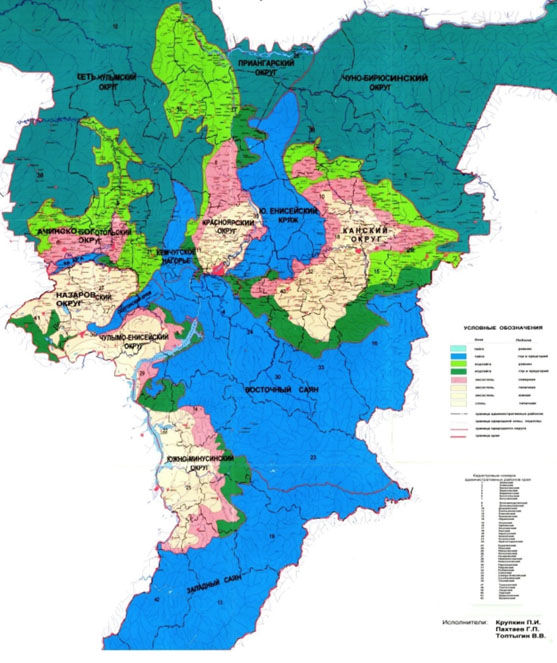Characterization of the natural resource potential of the agricultural zone of the Krasnoyarsk territory
DOI:
https://doi.org/10.31251/pos.v7i1.235Keywords:
natural resource potential; climate change; agricultural lands; natural region; hemiboreal forest; forest-steppe; steppe; sum of active temperature, sum of precipitations.Abstract
The aim of the study was to determine the natural resource potential of the agricultural territories in the agricultural regions of the Krasnoyarsk Territory and to investigate the fundamental characteristics of climatic conditions.
Location and time of the study. The study utilized multi-year data (from 1978 to 2020) from 22 meteorological stations located in the natural districts of the Krasnoyarsk Territory to analyze climatic conditions.
Methods. A georesource database was used to assess the natural resource potential (NRP), including information about soils, agroclimatic parameters, and their impact on agricultural crops. Soils and climatic parameters were ranked on a scale of 5 to 100. The NRP assessment was categorized as follows (points): 1–20 – low; 21–40 – below average; 41–60 – average; 61–80 – above average; 81–100 – high. Climatic conditions were analyzed based on multi-year data from meteorological stations in different natural regions of the Krasnoyarsk Territory, using trend analysis and data smoothing methods to identify dynamics.
Results. The natural resource potential values vary from 32.5 points for the northern forest-steppe podzolic soils in the Kansk Natural District to 62.5 points for chernozems (black soils) in the northern forest-steppe of the South Minusinsk Natural District. Weighted average NRP values for the agricultural territories of the Krasnoyarsk Krai increase in the following sequence (points): subtaiga (38.0) – Kansk Natural District (45.4) –Krasnoyarsk Natural District (46.3) – Achinsk-Bogotol Natural District (47.4) – Chulymo-Yenisei Natural District (47.8) – Nazarovo Natural District (49.4) – South Minusinsk Natural District (54.3).
Conclusions. Climate warming, accompanied by significant increases in summer and winter precipitation, milder winters, and prolonged growing seasons favorable for agricultural crops and varieties, will have a positive impact on the NRP of the region's agrolandscapes, promoting the development of commercial agriculture, especially in the forest-steppe zone. The range of agricultural crops and varieties may expand. Cultivating winter and hard wheat varieties is expected to become more effective. Improved natural conditions will contribute to bringing long abandoned lands into agricultural production. Changes in soil regimes and properties will lead to the transformation of agricultural crop cultivation technologies.
Downloads

Downloads
Published
How to Cite
Issue
Section
License
Copyright (c) 2024 The Journal of Soils and Environment

This work is licensed under a Creative Commons Attribution 4.0 International License.






